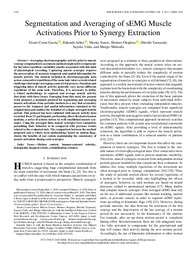Por favor, use este identificador para citar o enlazar este ítem:
https://hdl.handle.net/11000/6500Registro completo de metadatos
| Campo DC | Valor | Lengua/Idioma |
|---|---|---|
| dc.contributor.author | Okajima, Shotaro | - |
| dc.contributor.author | Iáñez Martínez, Eduardo | - |
| dc.contributor.author | Yamasaki, Hiroshi | - |
| dc.contributor.author | Costa García, Álvaro | - |
| dc.contributor.author | Alnajjar, Fady S. | - |
| dc.contributor.author | Hattori, Noriaki | - |
| dc.contributor.author | Shimoda, Shingo | - |
| dc.contributor.other | Departamentos de la UMH::Ingeniería de Sistemas y Automática | es |
| dc.date.accessioned | 2020-10-15T06:47:56Z | - |
| dc.date.available | 2020-10-15T06:47:56Z | - |
| dc.date.created | 2020-06-11 | - |
| dc.date.issued | 2020-10-15 | - |
| dc.identifier.issn | 2377-3766 | - |
| dc.identifier.uri | http://hdl.handle.net/11000/6500 | - |
| dc.description.abstract | Surface electromyography(sEMG) measurement has been an essential approach to analyze human behaviors because we can generally consider that sEMG signals represent the muscle activities as the final output of our nerve system. One of the most serious problems for considering sEMG signal as the muscle activity is the shift of the relative position between muscles and skin depending on a posture. The motion of forearm rotation is the prominent example of muscle-skin shifting depending on postural changes. The sEMG signal from a sensor may represent the different muscle activity when the muscle-skin shifting is happened. In this study, we discuss a method to quantify the muscle-skin shift from the sEMG signals in response to the postural changes. We use the high density sEMG sensor that is possible to measure sEMG signal as the potential map. We proposed the computation algorithm to quantify the amount of muscle-skin shifting based on the change of the sEMG signals in response to the postural changes. We conducted the experiments of wrist extension motions under three different forearm postures: forearm pronation, natural posture and forearm supination. Experimental results from three healthy subjects show that we can quantify the extent of muscle-skin shifting as an angle by using proposed algorithm. | es |
| dc.format | application/pdf | es |
| dc.format.extent | 6 | es |
| dc.language.iso | eng | es |
| dc.rights | info:eu-repo/semantics/openAccess | es |
| dc.subject | electric sensing devices | es |
| dc.subject | electromyography | es |
| dc.subject | medical signal processing, | es |
| dc.subject | skin | es |
| dc.subject.other | 62 - Ingeniería. Tecnología | es |
| dc.title | Quantification of Extent of Muscle-skin Shifting by Traversal sEMG Analysis Using High-density sEMG Sensor | es |
| dc.type | info:eu-repo/semantics/article | es |
| dc.identifier.doi | 10.1109/CBS46900.2019.9114488 | - |
| dc.relation.publisherversion | http://dx.doi.org/ 10.1109/CBS46900.2019.9114488 | - |

Ver/Abrir:
4-09006791.pdf
3,12 MB
Adobe PDF
Compartir:
 La licencia se describe como: Atribución-NonComercial-NoDerivada 4.0 Internacional.
La licencia se describe como: Atribución-NonComercial-NoDerivada 4.0 Internacional.
.png)